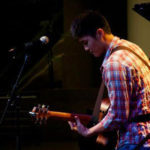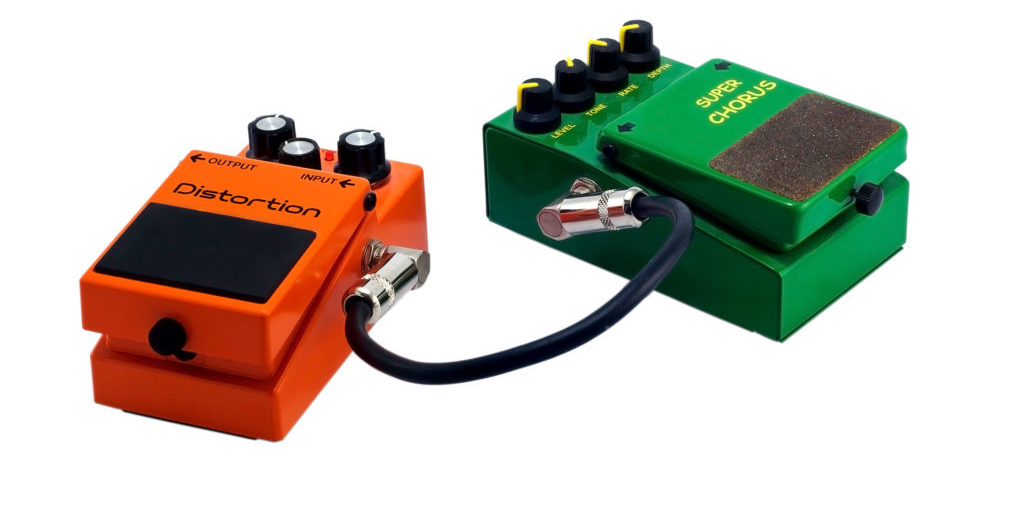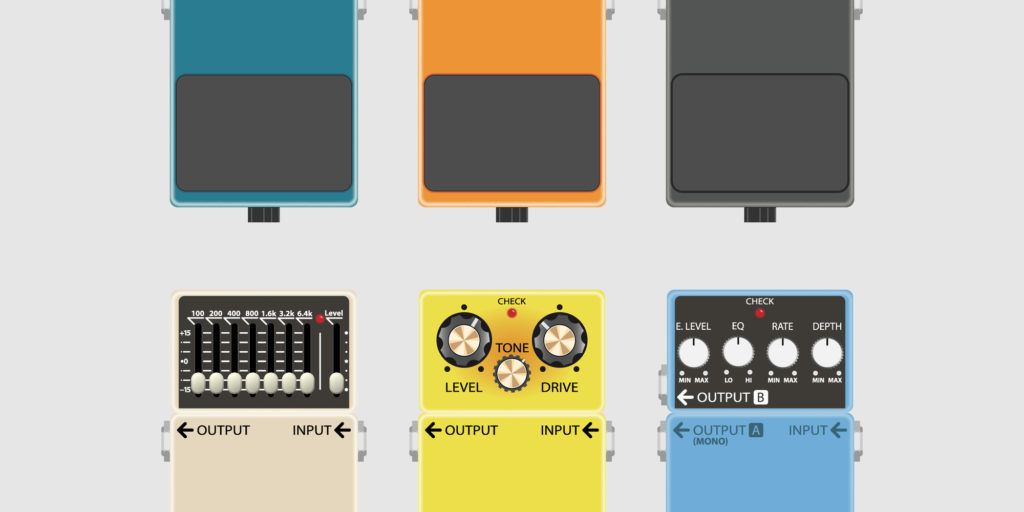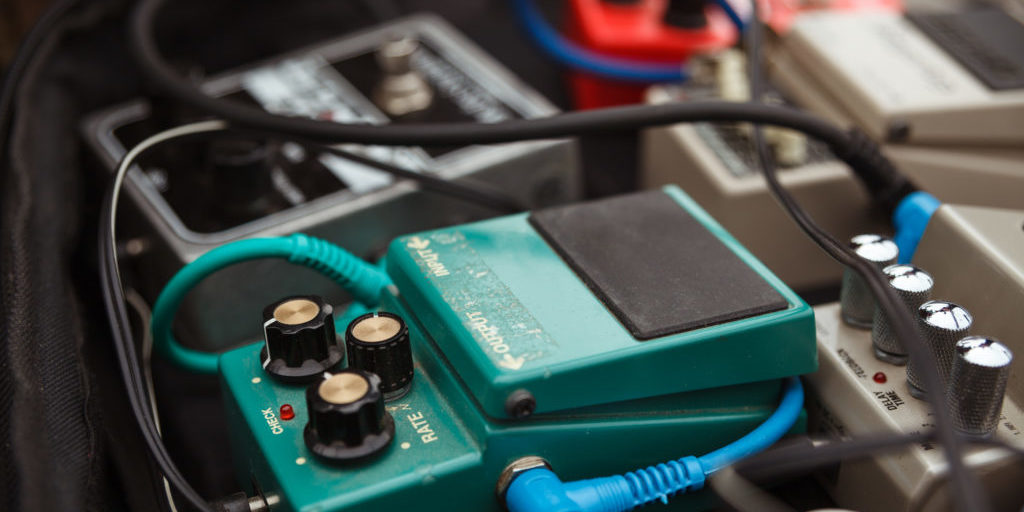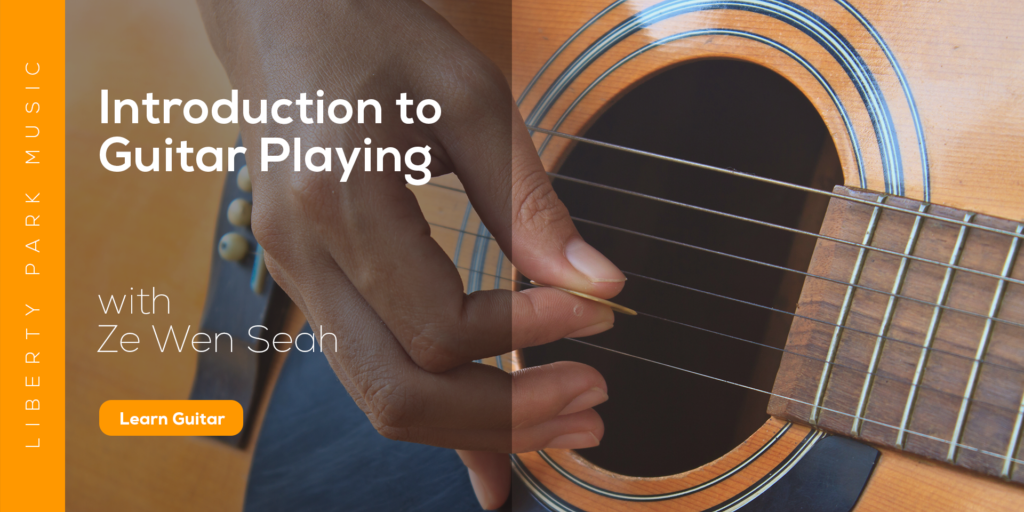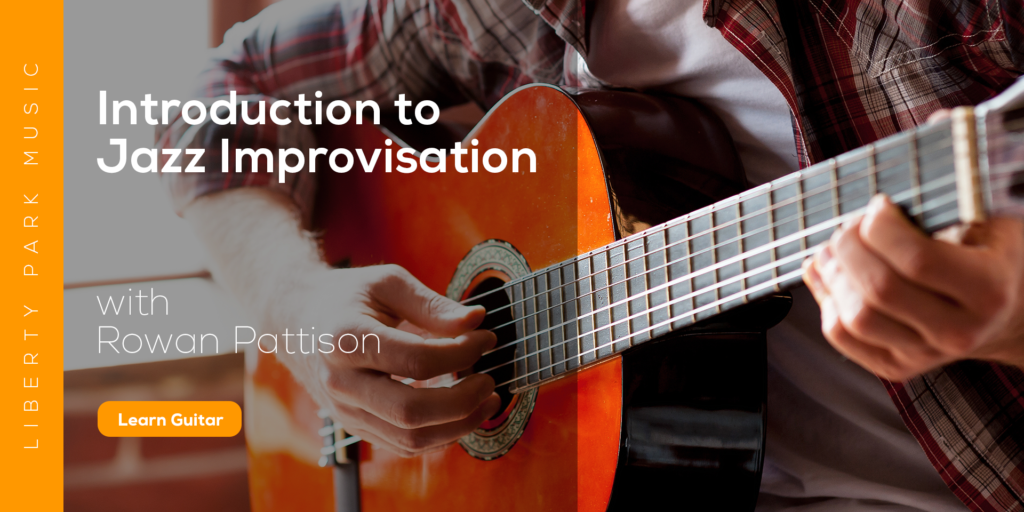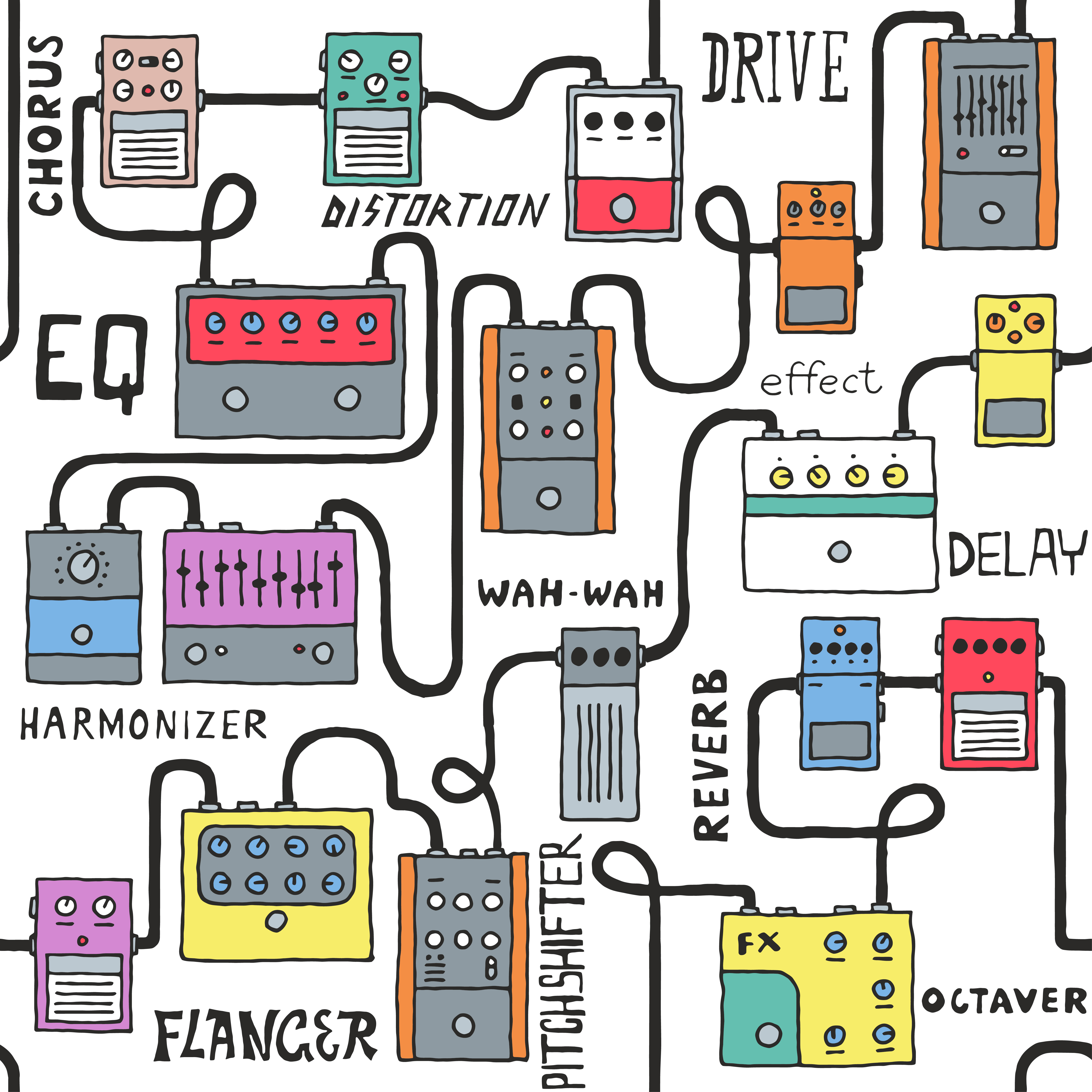
One of the most musically expressive effects available in the guitarist’s toolbox is the Wah pedal. Musical legends across several genres have used this effect with great results for decades. Notable Wah effect users include Jimi Hendrix, Eric Clapton, Jeff Beck, Eric Johnson, Stevie Ray Vaughan, Slash, Steve Vai, John Mayer, George Harrison, and the list goes on and on…
The Wah effect may be the second most common pedal (just behind Overdrives) found on the pedalboards of pros all around the world. The reason for this is thanks to the many different things a Wah can be used for. You can use it to spice up your solo and make your guitar more voice-like, you can use it to boost a certain frequency to cut through the mix, or you can use it to accentuate certain beats when playing rhythm guitar.
Before introducing some popular Wah pedals, let’s first learn about what they do and how they work; this will help you figure out what your needs are when buying a Wah pedal.
What is a Wah?
If you don’t know exactly what a Wah sounds like yet, listen to “Voodoo Child (Slight Return)” by Jimi Hendrix, or check out this demonstration section from one of our YouTube lesson videos! The iconic Wah-Wah sound that almost sounds like a crying baby is the effect produced by a Wah pedal.
In its simplest form, a Wah pedal is a filter that boosts certain frequencies while cutting others. It actually works very similarly to the tone knob on your guitar. Both the tone knob and the Wah pedal use potentiometers to boost and cut specific frequencies, it’s just that the Wah pedal does it in a faster and more dramatic manner.
While the Wah pedal is often used as a sweeping filter effect to help you accentuate certain notes or beats, you can also use it as a dramatic EQ for your guitar tone. Just find the sweet spot of your wah pedal and leave it there! Using your Wah pedal as an EQ can help you boost some of the “nasally” frequencies which will help your guitar pop out in the band mix, or you can use it to roll off all the high end (like turning your tone knob all the way down) which can sound great for some rhythm guitar parts. For such a simple pedal, it really can be used in a large number of ways!
Effects Chain
If you’re looking to use your Wah pedal along with other effects, very often, the best place to put your Wah pedal is right at the beginning of the effects chain. The rationale behind that is that you want to have a clean, unaffected guitar tone going into a filter effects, rather than a dirty, high-gain, saturated tone. This will generally yield a cleaner resulting tone. Of course, as with anything related to music, there are no rules. Feel free to mess around with the position of your Wah pedal. Many people enjoy placing their Wah pedal at the end of their effects chain!
Things to look out for
While there are many different Wah pedals out there with all kinds of features, the one thing you must always consider when buying a Wah pedal is durability. Consider this: the only way to use the pedal is by stepping on it and constantly rocking the foot pedal back and forth. Of all my effects pedals, my Wah pedal was the fastest pedal to show signs of wear and tear, and that’s simply due to the nature of operating the unit. Undoubtedly, your device will start making squeaky noises after a couple of months and you will have to figure out how to lubricate the parts. On some of the cheaper models, the potentiometer could stop working altogether due to overuse. Your foot pedal could also randomly break if it’s made from cheap plastic. Just remember to get a pedal that looks like it will be fine even if a car ran over it!
Of course, in addition to how durable the unit is, another important thing to consider is the sound of the device and whether you can adjust the filter of the effect. On units where the filter can be tweaked, you will have a much wider variety of sounds available from your Wah pedal.
The last thing you should look out for is whether the pedal has true-bypass. True-bypass simply means that when the pedal is not activated, the guitar tone does not pass through the components of the pedal. It simply bypasses all of the internals of the pedal as if the pedal isn’t even there. This should be something you look out for because pedals that don’t have true-bypass can negatively affect the tone of your clean signal. This can happen either in the form of a reduction of overall volume, a reduction in dynamics, or simply just a less appeasing clean tone.
Now that we’ve covered the basics, here are some really popular Wah pedals across a few price ranges.
1. Dunlop GCB95 Cry Baby Wah Pedal
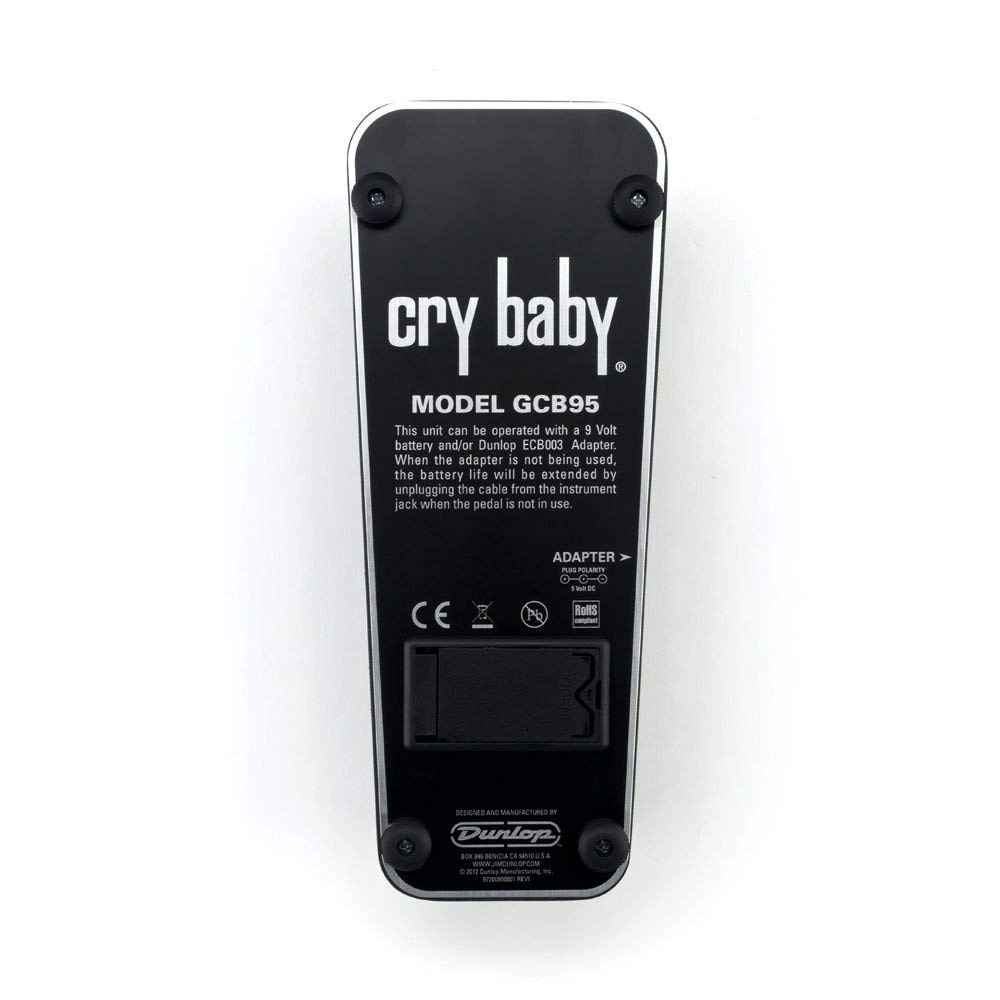
Brand New: $80
Used: $30 - $50
Let’s begin with the original Cry Baby Wah, the one that started it all for Dunlop. This pedal has that classic ‘60s Wah tone, and it has been used by legends like Jimi Hendrix and David Gilmour. If you’re looking for a simple plug-and-play Wah pedal that won’t put a hole in your wallet, the original Cry Baby is the way to go.
The pedal has a die-cast constructed casing that looks like you could drop it down a flight of stairs, and the only casualty would be the stairs (I am not responsible for any broken Wah pedals--or stairs). Remember how I mentioned earlier that you want to get a pedal that looks like it can be run over by a car? Well, this pedal definitely looks that way.
The outer casing of the unit doesn’t have any knobs or buttons that you can mess with, and that’s truly the beauty of this unit. It’s just a simple, no frills, one-trick-pony Wah pedal. To activate the unit, you just push the pedal all the way to the tip to trigger the hidden footswitch. Once activated, you simply rock the foot pedal up and down to control the sweep of the filter. The frequency spectrum that the filter affects ranges from 350Hz to 2.2kHz. This frequency range can be a little wide as going up to 2.2kHz can sound really harsh to some people. However, if you find the sweep range to be a little too wide, you can always avoid going to the extreme ends with your foot control. It just takes a little bit of practice.
Because of how popular and iconic this pedal is, many companies have come out with modifications that can be built into the pedal. The mods include things like adding an LED status indicator so you know when the pedal is activated or adding a true-bypass circuit.
This pedal lacks true-bypass, and while this may sometimes be unnoticeable on other pedals, I’ve found that this pedal will negatively affect your clean tone. Besides sucking out some of the dynamics and volume, the pedal also adds quite a bit of noise. This can be pretty annoying if you’re adding this pedal to an existing effects chain. Everything that comes after your Wah pedal must be adjusted to compensate for the change in clean tone. And while it is possible to add true-bypass using a mod, the price and effort of putting in that mod may justify getting a higher-end Wah pedal that comes with true-bypass and additional features.
However, if true-bypass isn’t something that concerns you, then this pedal is pretty hard to beat. It comes in a rugged casing at a low cost, and allows you to get that classic ‘60s Wah sound. Additionally, the pedal can be powered either by a 9v battery or a power adapter.
Buy here
2. Dunlop Cry Baby 535Q Multi-Wah
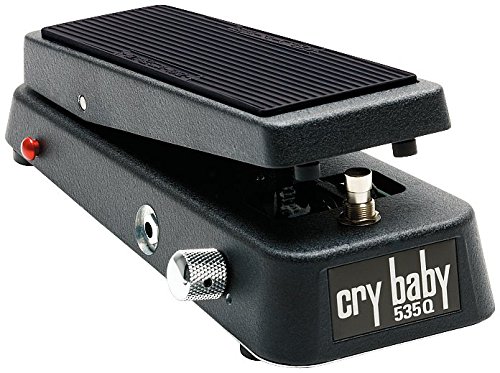
Brand New: $150
Used: $55 - $80
Another Dunlop pedal? Well, yes. To be honest, it’s possible to write an entire article just about Dunlop Wah pedals because: 1) They know how to make great Wah pedals, and 2) They have a huge variety of Wah pedals that all sound great. I’ll just include the ones that I feel really stand out.
The 535Q Multi-Wah may be one of, if not the most, recommended Wah pedal out there thanks to it’s simple-to-use controls that will allow you to achieve a huge variety of Wah tones. If you’re planning on using your Wah pedal across a wide range of genres, this pedal will definitely suit your needs. The best part: it’s still considerably affordable.
The exterior of the unit is the same die-cast constructed casing that will easily pass our “car” test. Like many other Wah pedals, to turn on the unit, push the foot pedal all the way to the front to activate the hidden footswitch. Besides the concealed footswitch, there are two small black knobs on the left side of the unit, and a red switch and silver knob on the right side of the unit.
The red switch can be kicked on with your foot, and it gives you an overall volume boost. This can be useful because Wah effects, and filter effects in general, can cause your perceived output volume to drop. This is due to how the human ear perceives loudness. Adjusting how much of a volume boost you get can be done using the black volume knob on the left side of the pedal. The big silver knob adjusts the Wah range, which is the section of the frequency spectrum you can sweep across. Here is a breakdown of the Wah ranges in different positions:
Position 1: 440Hz - 2.2kHz
Position 2: 400Hz - 1.9kHz
Position 3: 375Hz - 1.8kHz
Position 4: 345Hz - 1.6kHz
Position 5: 395Hz - 1.4kHz
Position 6: 250Hz - 1.2kHz
As you can see, some positions have a pretty narrow range which can help you avoid extreme piercing highs or rumbling lows. I usually avoid having my Wah go above 2kHz, as I find frequencies above that to be a little too sharp.
The other black knob on the left side of the unit controls the Q width. Without getting too technical about what a Q width is, this knob adjusts how wide your Wah filter is. Setting a low Q width makes your filter narrow, resulting in certain frequencies being very pronounced. A higher and wider Q width will boost more frequencies, making the Wah effect a little more subtle. Imagine a narrow Q width to be a tall and sharp triangle that sweeps across the frequency spectrum, while a wide Q width looks more like a large mountain with a gentle slope. The wide Q width boosts all surrounding frequencies along with the “peak,” while a narrow Q width boosts the peak a lot more than the surrounding frequencies.
A narrow Q width is more appropriate for something like funk rhythm guitar as it can really cause your guitar to pop out in the mix. For more gentle chordal playing, a wide Q width may be preferred so that the effect is a little subtler.
Many people tend to find a setting that they enjoy, and they’ll just leave the pedal as it is once they’ve dialed it in. This pedal comes with true-bypass, and it can be powered by a 9v battery or adapter. Notable users include Buckethead, Eric Clapton, and Adam Jones.
Buy here
Learn with LPM
If you are looking to feel comfortable with playing basic major and minor chords, power chords, and apply different strumming techniques to your practices with Ze, check out his course called Rhythm Guitar
3. Dunlop CBM95 Mini Cry Baby
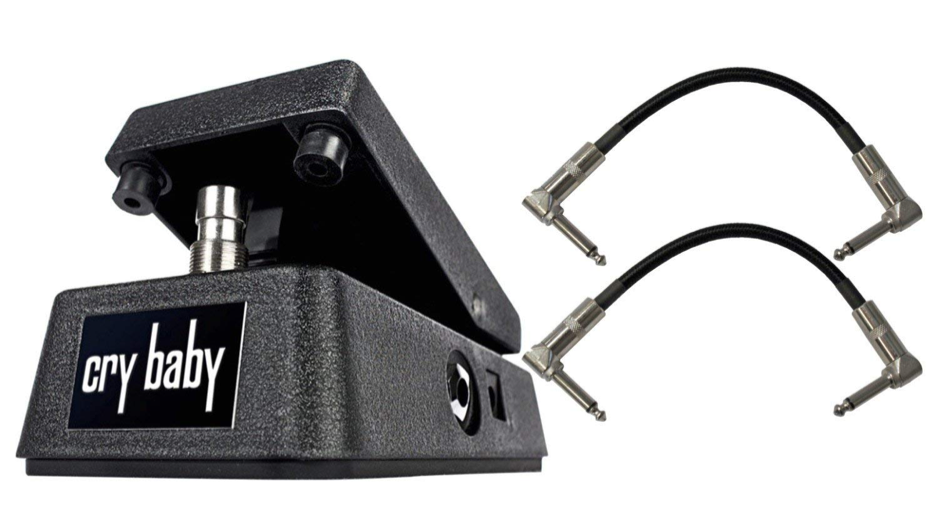
Brand New: $100
Used: $55 - $70
Here’s one last Dunlop pedal to add to the list. The Mini Cry Baby comes housed in the familiar die-cast constructed case, but this time, it is about half the size of the original Cry Baby. This is great for those of you who would love to have a Wah pedal but are having a hard time finding space on your pedalboard. The Mini Cry Baby is about the same size as a typical BOSS pedal.
While it comes in a smaller housing, this unit actually has quite a few more additional features than the original GCB95 Cry Baby. First of all, it has true-bypass, which gets rid of any noise or tone-sucking issues that comes with the GCB95 Cry Baby. It also has an internal three-way switch that allows you to set the pedal’s voicing. The three options are: H, M, and L. Moving the switch to the H position will give you the same Wah settings as the GCB95 Cry Baby, the M settings will give you a more vintage sounding Wah pedal, and L gives you a lower frequency range Wah sound that Dunlop uses in their Jimi Hendrix Signature Wah Pedal. That’s essentially three different sounding Wah pedals in such a compact casing, and for a relatively affordable price!
Like the two previous Dunlop pedals, the Mini Cry Baby can be powered with a 9v battery or power adapter.
The only minor issue that I can point out with this pedal is the smaller size may take awhile to get used to. The trick here is to keep your heel at the bottom end of the pedal. This will leave your toes hanging over the pedal, but I’ve found that playing with it this way feels a lot more like a full-sized Wah pedal.
Buy here
4. Electro-Harmonix Crying Tone Wah
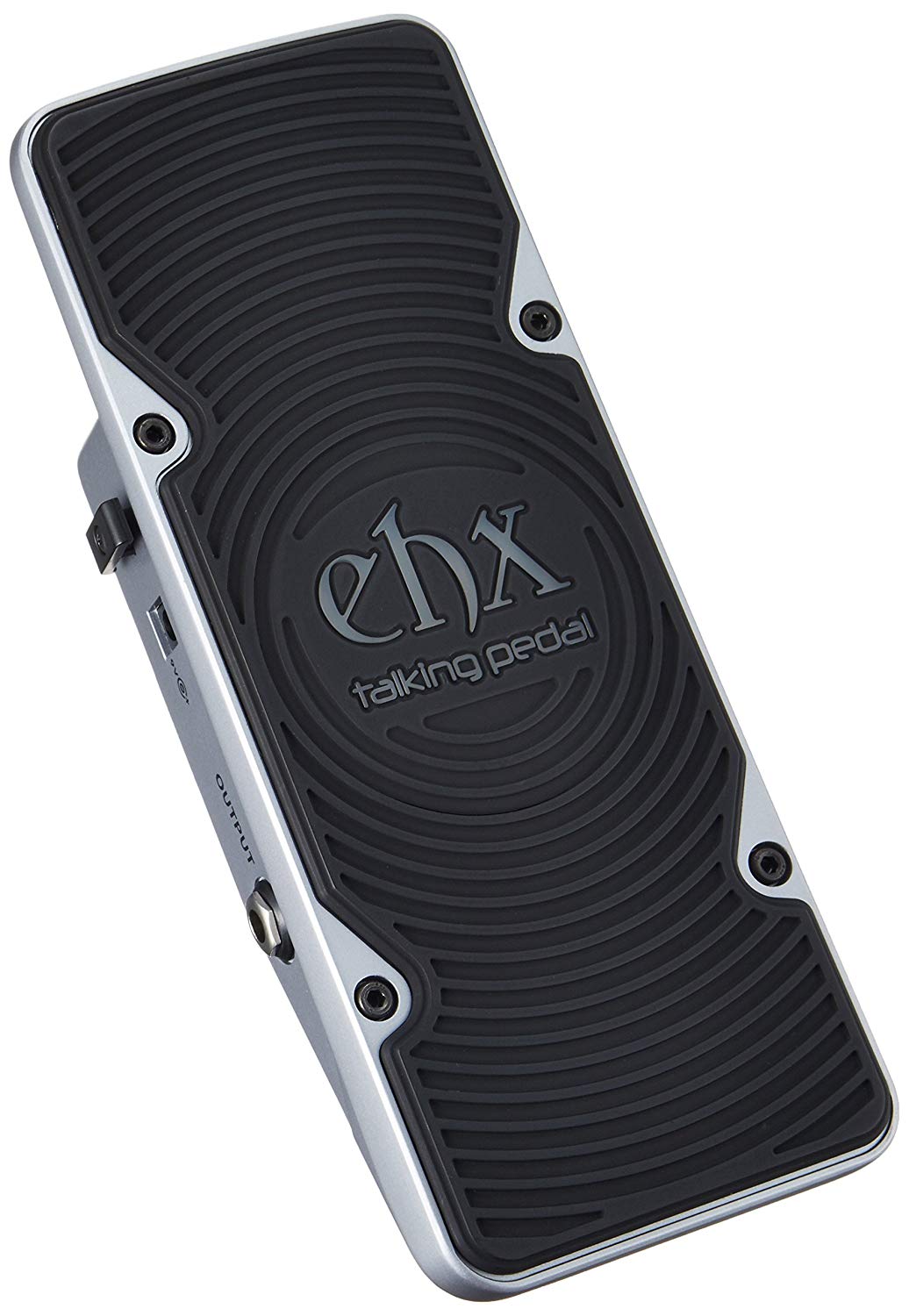
Brand New: $95
Used: $35 - $45
Here is an unusual pedal that I recently came across. The Electro-Harmonix Crying Tone Wah pedal is a first of its kind, boasting a Wah pedal with no moving parts. This means that there won’t be any problems with potentiometers, gears, or switches wearing out due to everyday use. Unlike regular Wah pedals, this pedal has a contoured base that allows its users to simply rock the pedal back and forth, while keeping track of the pedal’s tilt using internal sensors. The contoured base was also designed to make it feel like a regular Wah pedal when rocking the device back and forth.
In terms of sound, the Crying Tone sounds like a very good Wah pedal. To activate the effect, you simply tilt the unit all the way to the front. This will cause the EHX logo to light up, letting you know that the effect has been activated. There is only one button on the device labeled Calibrate, and what that does is it allows you to change the tone and functionality of the pedal. It’s even possible to get a “cocked” Wah sound, even though the design of the device may convince you otherwise. A “cocked” Wah is when a Wah pedal is turned on, but left at a certain tilt position. This essentially turns the Wah pedal into a very significant EQ. The device can be powered using a 9v battery or power adapter.
The design of the unit does bring along some obstacles though. Firstly, due to the design of the pedal, it’s impossible to place it on a pedalboard as the entire pedal has to be able to move freely. Another odd thing about the design is the placement of the EHX logo that lights up when the unit is activated. Its current position is exactly where you’ll be placing your foot, so in reality, if you’re using this device as intended, you’ll be stepping on the only thing that lets you know the status of the device. What’s the point of having some sort of status indicator when I won’t be able to see it when I actually need to use the pedal?
However, don’t let those two issues turn you away from this pedal. It’s still a great sounding Wah pedal with an innovative design that looks to remedy some of the fundamental flaws of Wah pedals. Can’t really argue against the great price too!
Read more information here
5. Fulltone Clyde Deluxe Wah
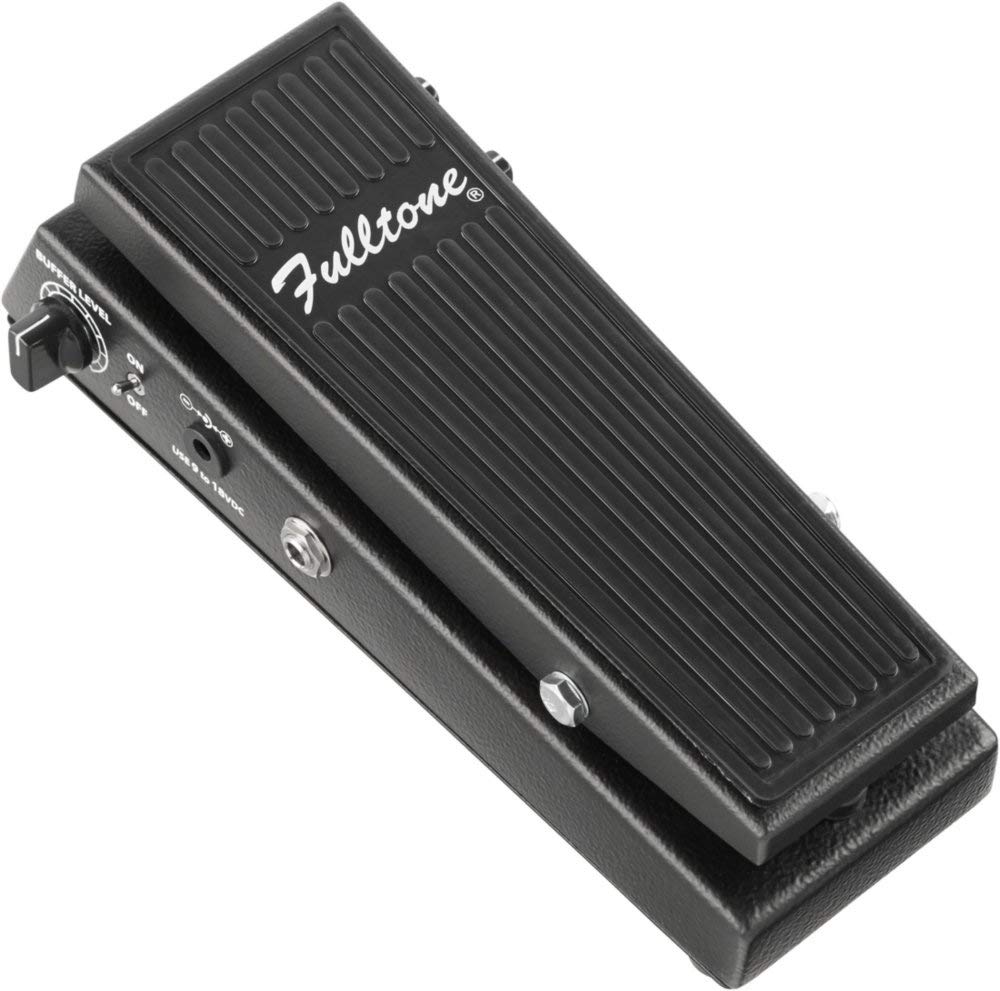
Brand New: $223.20
Used: $115 - $155
Let’s start off by stating the obvious: this is a much more expensive Wah pedal. It’s about twice the price of all the previous models listed, which leaves you wondering, “is the Clyde Deluxe Wah really twice as good as all the other options on this list?”
Well, let’s begin by taking a look at the construction of this unit. All Fulltone products are hand-built and tested in the USA, and they’re also made using top-notch components. In terms of build quality, all Fulltone products look like they are of exceptional quality and built to last. The Clyde Deluxe Wah is no different, and it does look a little more pristine and sturdy than your typical Wah pedal. It also sounds great thanks to the high quality components that Fulltone uses. This pedal also comes with true-bypass, an LED status indicator, and it can be powered with a 9v battery or power adapter.
When comparing this Wah pedal to any other, the thing that definitely sticks out on the Clyde Deluxe Wah are the knobs and switches on the unit. These knobs can virtually help you achieve any Wah sound you may have in your head.
The main knob is a three-way-selector that lets you set the mode of the pedal. The three options are: Wacked, Jimi, and Shaft.
Wacked gives you a sound close to the old Colorsound Wah pedals. The Colorsound Wah pedals have a distinct and strong bass response that sound very different from your typical Wah pedal. This mode can give you a low-end growl not available on many other pedals.
The Jimi option replicates the 60s Vox Clyde McCoy Wah pedal originally used by Jimi Hendrix and Eric Clapton during his Cream days. This option can be considered the most typical Wah sound.
The Shaft option shifts the Wah frequency range a little high to give a brighter attack in the Wah effect. This option is best suited for funk guitar.
Beside the three-way knob, there is a knob that allows you to set the input level. This gives you the option of pushing a really hot and saturated signal into the Wah, or you can dial it back to get a really clean signal. Inside the pedal is a internal resonance control which allows you to adjust the gain and bass response of the device. This can help you calibrate the pedal to your specific pickups, and can be very helpful for guitars with hot pickups.
On the left side of the device, there is a Buffer knob and a switch to activate or deactivate the buffer. Having a built-in buffer will allow your Wah pedal to work better with high gain amps or pedals. This actually solves one of the fundamental issues of Wah pedals without changing the tone of the pedal.
So is the Clyde Deluxe Wah really worth twice the amount as the other options? Well, that really depends on you. I personally feel like they’ve done enough to warrant the extra price, especially in the construction and build-quality of the unit. It definitely looks like something that can last a little longer than its competitors.
Notable users of this pedal include Larry Carlton, Josh Homme, and Ed O’Brien.
Read more information here
6. Morley Steve Vai Bad Horsie 2 Contour Wah
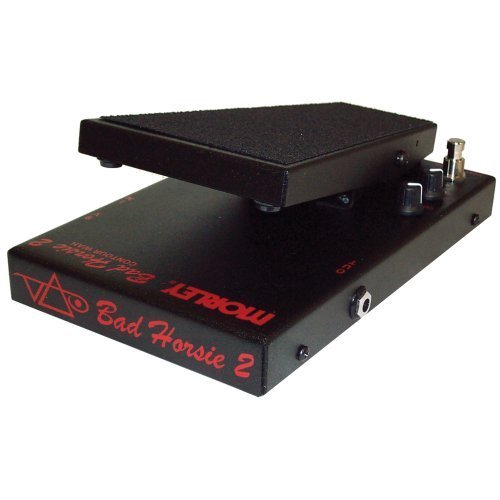
Brand New: $135.85
Used: $60 - $85
Steve Vai has long been known to love using a Wah pedal, so it comes as no surprise that he has his own signature model. Now, this isn’t like your typical signature model Wah pedal. Most other signature models have similar physical designs, they just sound a bit different from each other. The Bad Horsie 2 Contour Wah pedal however, works in a very unique manner.
First of all, to activate other Wah pedals, you will have you push the foot pedal all the way down until you click on the hidden footswitch below. The Bad Horsie 2 doesn’t have such a switch, and is instead activated the moment you push down on the foot pedal. When you let go of the foot pedal, it is deactivated. This is a really cool feature that allows you to not worry about whether your Wah is turned on or not.
The next thing is, the foot pedal features a spring action which means the foot pedal will move back to its original position when you take your foot off the device. The spring action also makes it feel a little easier to control the Wah effect as there is something pushing back against your foot. Of course, this does mean that you can’t leave this pedal “cocked,” but if that’s not something you do anyway, then it shouldn’t be too big of a concern. The pedal also works using a Electro-Optical Wah Control, which basically means it doesn’t use a typical potentiometer and gears to achieve the Wah effect. This means that this unit should theoretically last longer as there aren’t as many moving mechanical parts.
The footswitch labeled “Contour Wah” on the Bad Horsie 2 allows you to switch between two modes: Bad Horsie and Contour.
Bad Horsie mode (when the footswitch is deactivated) is the default Wah sound. The Contour mode allows you to shape the Wah sound using the two knobs. The Level knob adjusts the output volume of the device and the Contour knob lets you tweak the frequency range of the Wah.
The construction of the device looks really sturdy, as with all the other pedals on this list, and the unit can be powered with a 9v battery or power adapter. This pedal doesn’t have true-bypass however, opting instead for a buffer-bypass. Though, I can’t say that it negatively impacts your clean tone much.
The bottom line for this pedal is that it’s has some really unique features not found on any of the other pedals listed so far, and it sounds really good, especially if you’re looking for a modern Wah sound.
Buy here
And that’s all for this list!
Feel free to check out our other lists of guitar pedals if you’re interested, and if you feel like there should be a pedal included in this list, please let us know in the comments!
About the Author: Ze
Ze first began his journey playing original music and top 40s pop tunes around the country's popular venues. Eventually, through the music of John Mayer, he found a strong attraction to blues music. Ze has years of experience teaching beginners and intermediate guitarists. Currently with Liberty Park Music he is teaching Introduction to Guitar Playing for Complete Beginners, Rhythm Guitar to learn about strumming, chords and more, Guitar Essentials as a fast-track review course, and lots of Song Lessons on pop and rock hits.

